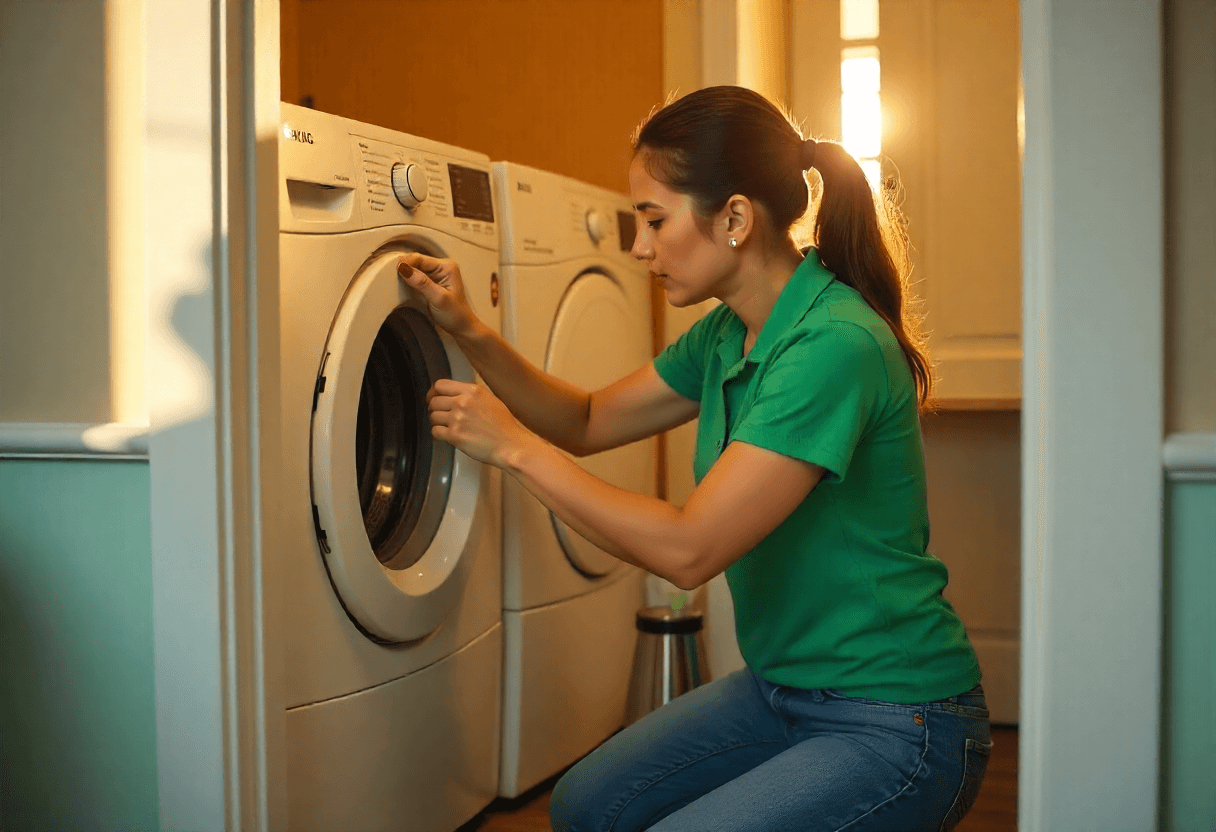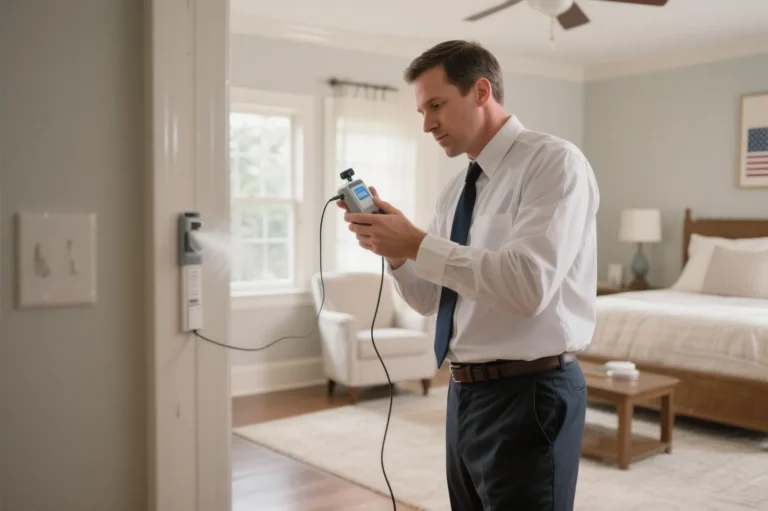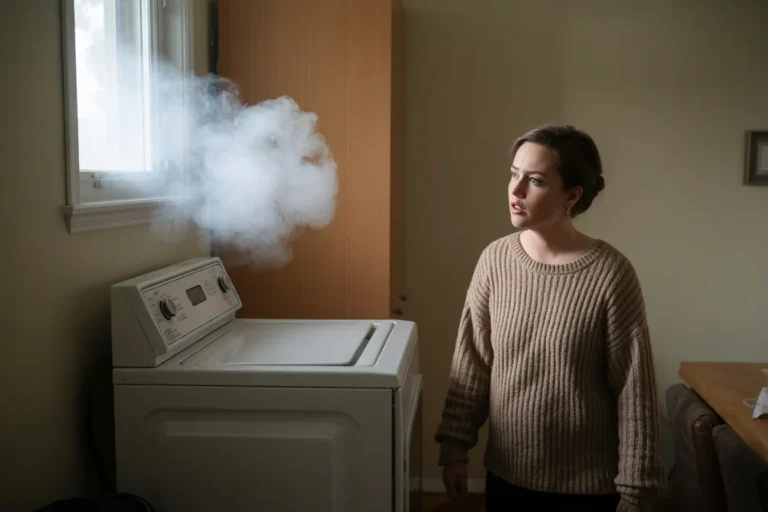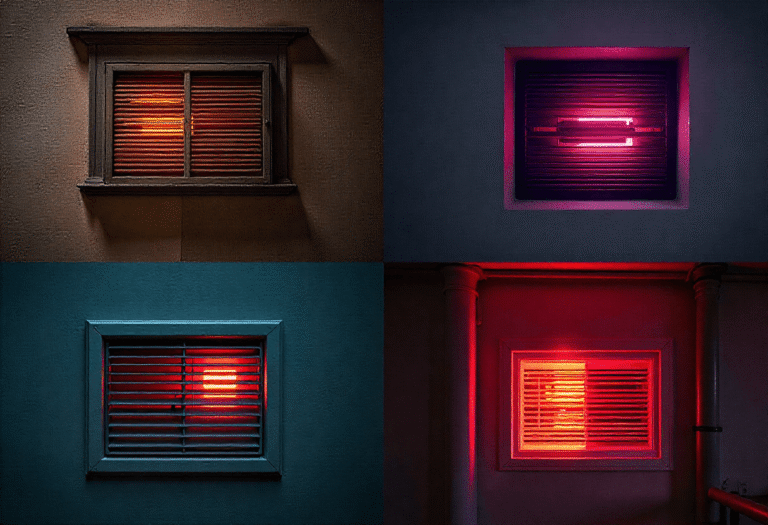You throw in a load of laundry, hit start on the dryer, and go about your day. But lately, the clothes aren’t drying quite as fast.
You might feel that the laundry room is hotter than usual. Or worse, there’s a faint burning smell that wasn’t there before.
For starters, let me tell you these signs aren’t something to brush off.
Why?
Well, these are signs that your dryer vent might be clogged. And when left unchecked, it can quickly turn from a minor inconvenience to a serious fire hazard.
Now, you might wonder how often should you clean your dryer vent exactly?
That’s exactly what I’ll walk you through in this blog. You’ll Know:
- How often to clean dryer vent professionally
- Factors that affect cleaning frequency
- How to spot warning signs
- How to know estimate when your own system is due
So, let’s get started.
Key takeaways
- Dryer vents in New Jersey homes should be professionally cleaned at least once a year.
- Homes with frequent dryer use, pets, or long vent runs might need cleaning every 6 months.
- New Jersey’s cold winters lead to heavier dryer usage, which accelerates lint buildup.
- Older homes and complex duct layouts (like attic or crawlspace vents) make blockages more likely.
- Signs your dryer vent needs cleaning include longer drying times, overheating, or a burning smell.
- HOA or condo associations in NJ may require cleanings every 1-2 years for fire safety compliance.
- Regular cleanings reduce fire risks, improve efficiency, and extend the life of your dryer.
Why is dryer vent cleaning so important in NJ?
Dryer vent cleaning is important everywhere. But in New Jersey, it’s especially critical due to our climate, housing styles, and laundry habits.
Here are a few reasons why dryer vents need more frequent cleaning in the Garden State:
- Cold weather: Long fall and winter seasons mean more dryer use, leading to faster lint buildup, sometimes twice as fast as in summer.
- Older homes: Many NJ houses have long and outdated vents running through attics, basements, or crawlspaces. They’ve multiple bends and sometimes unsafe materials, making lint buildup more likely.
- Multi-family housing and HOAs: Condos and HOA communities often require vent cleaning every 1-2 years to prevent blockages and fire hazards.
- Fire risk: Nearly 3,000 dryer fires happen nationwide yearly, with clogged vents the top cause. New Jersey’s older homes and gas dryers increase that risk, making regular cleaning a critical safety measure.
Schedule Your Free Estimate Today
Contact us to improve your indoor air
quality with our expert cleaning services in NJ.
How often should you clean your dryer vent in New Jersey?

If you’re a homeowner in New Jersey, your dryer vent should be professionally cleaned at least once a year.
But as with most things in home maintenance, the actual timeline will depend on a lot of things.
You see, there are a lot of factors that decide how often should you clean a dryer vent. This includes how much you use the dryer, what kind of home you live in, and whether there are any risk factors like pets, long duct runs, or older equipment.
Here’s a simple breakdown:
| Home Type / Usage | Cleaning Frequency | Reason |
| Single-family home (1-2 people, low usage) | Every 12-18 months | Lower laundry loads, minimal buildup |
| Average NJ household (3-5 people) | Every 12 months | Standard usage, builds up faster over winter months |
| Large family / high-use home (daily drying) | Every 6-9 months | Constant drying leads to faster lint accumulation |
| Home with pets | Every 6-9 months | Pet hair adds to lint and clogs more quickly |
| Condo / HOA with shared ducting | Every 1-2 years | Often required by association rules for fire safety |
| Homes with long / vertical duct runs | Every 6-12 months | Harder for lint to exit, higher chance of internal clogging |
Let’s have a closer look.
1. Single family homes
If you’re a family of two and only do a few loads of laundry each week, you can probably get away with cleaning your dryer vent every 12-18 months.
Why?
That’s because with limited use, lint buildup happens more slowly and the dryer isn’t working overtime.
But even with low usage, a once-a-year checkup is smart, especially in New Jersey where colder weather calls for more frequent dryer use.
2. Typical NJ family homes with 3-5 people
Most families in New Jersey fall into this category. And if you’re running the dryer several times a week for clothes, towels, and bedding, try to clean the vent at least once a year.
You see, homes in this category have quicker lint build up. More so when the whole family’s laundry needs start to pile up.
Plus, when winter hits, you’ll likely use the dryer more frequently.
So, a regular annual cleaning helps avoid airflow issues and fire risks.
3. Large families or high-usage homes
If your dryer is working almost every day, you’ll want to clean your vent every 6 to 9 months.
Why?
Bigger households usually mean more laundry. Think more towels, school clothes, uniforms, and bedding.
This also means more lint buildup that accumulates quickly inside the vent system.
In busy homes like this, neglecting the vent can lead to longer drying times, worn-out dryers, or even overheating issues.
4. Homes with pets
Pet owners know how quickly fur ends up on clothes, towels, and bedding.
Unfortunately, that fur also ends up in your dryer, and eventually, your dryer vent. This makes the system clog up much faster than in pet-free homes.
So, if you’ve got dogs or cats, it’s a good idea to schedule a vent cleaning every 6 to 9 months. This will keep the system running smoothly and reduce allergens blowing back into your laundry room or home.
5. Condos or HOAs with shared ducting
For those of you who live in a condo or townhome in New Jersey, chances are your homeowners association (HOA) has vent cleaning guidelines in place.
And many such guidelines require residents to clean vents every 1 to 2 years to stay compliant and avoid fire risks in shared buildings.
After all, even if you don’t do a lot of laundry, your setup might include shared ductwork, which can complicate airflow and safety.
6. Homes with long or vertical duct runs
If your dryer vent travels a long distance, like from the basement through an attic or multiple bends, lint has a much harder time making its way out. This increases the risk of clogging and makes cleaning more difficult.
So, in homes with long or vertical duct runs, you should plan for professional cleaning every 6 to 12 months. It’s especially important in older New Jersey homes where the ducting might not meet current code or be easily accessible.
Factors that decide how often to clean dryer vent
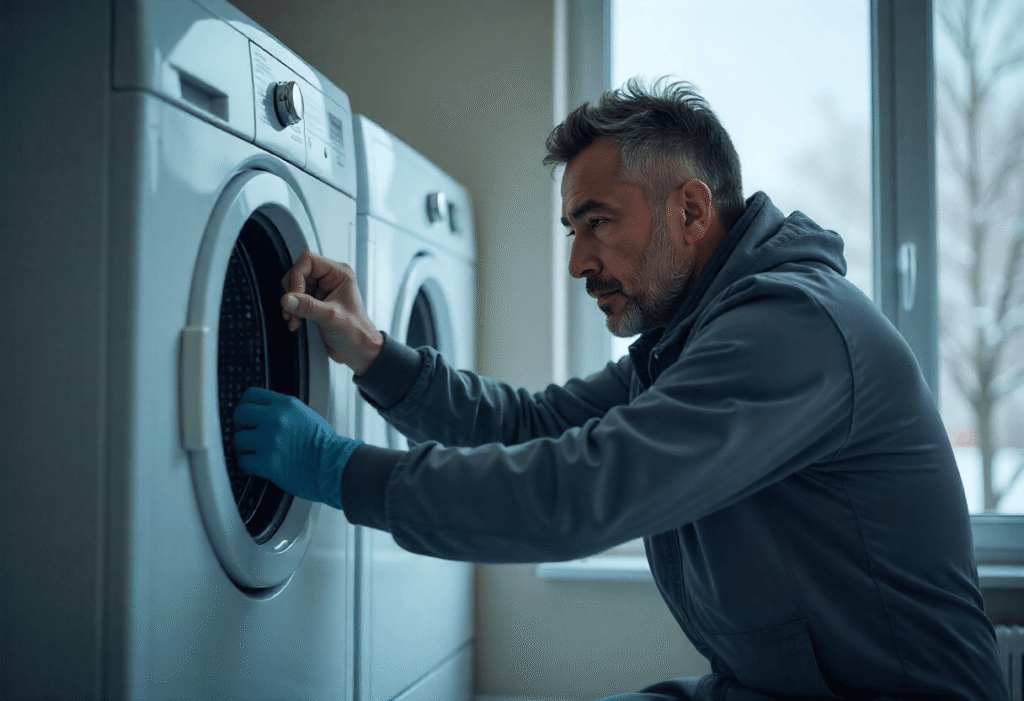
While general timelines are helpful, the reality is that dryer vent cleaning isn’t one-size-fits-all.
This is especially true for New Jersey where local conditions, lifestyle habits, and even how your home is built can all affect how often your dryer vent needs professional cleaning.
Overall, here are the main factors that determine how frequently you should clean your dryer vent:
1. How often you use the dryer
The more loads you do each week, the faster lint builds up.
So, if you’re drying clothes 4-7 days a week (which is common in NJ households), your system is working constantly. And that means it’ll need more frequent cleaning.
That’s exactly why I suggest homes with large families or high laundry turnover go for cleanings every 6-9 months.
2. Pets in your home
Got a dog or cat (or both)?
Then you’ve got fur in your lint trap and your dryer vent too.
You see, pet hair clings to fabrics, and no matter how clean your home is, it’ll find its way into the system. This leads to quicker clogs and poor airflow.
In this case, I suggest you schedule cleaning every 6–9 months to keep your dryer working efficiently.
3. Length and layout of the vent
This is a big one in New Jersey homes. If your vent runs through a basement, crawlspace, or out through the roof, it’s more prone to blockage.
This is mainly because longer ducts and multiple turns make it harder for lint to exit, which speeds up buildup.
Meaning if your vent line is more than 10 feet or includes sharp bends, you’ll likely need cleaning every 6-12 months.
4. Age of your home
Older homes, especially those built before the 1990s, often weren’t designed with ideal vent paths in mind.
Here, you might have outdated materials like flexible plastic ducts, or venting that snakes around joists and beams.
These outdated systems restrict airflow and collect lint more easily, meaning more frequent cleanings are necessary to stay safe.
5. Type of dryer (gas or electric)
Although both gas and electric dryers produce lint, gas dryers have the added concern of carbon monoxide. That’s because if the vent is blocked, that gas can back up into the home.
That’s why it’s even more critical for gas dryer owners in NJ to stay on top cleanings and schedule a professional clean-up once every year/.
6. Shared or multi-unit venting
You’ll likely experience faster lint buildup if your home shares a dryer vent with neighboring units, as in some condos or multi-family properties. Also, you’ve got less control over what’s happening in the system.
Ideally, these vents should be cleaned every 12-18 months minimum. It’s best to coordinate through your HOA or building management to ensure compliance.
7. Humidity and seasonal factors
New Jersey summers can be hot and humid, which causes dryers to work harder and longer to pull moisture from clothes. At the same time, people tend to do more laundry in winters.
Both ends of the weather result in heavier dryer usage, which means more lint. And, thus, more frequent vent cleaning is needed year-round.
In short, here are the factors that affect how often should you clean your dryer vent in NJ
| Factor | Impact on Cleaning Frequency | Recommended Cleaning Schedule |
| Dryer Usage | More loads means faster lint buildup | Every 6-9 months for high-use homes |
| Pets in the Home | Pet hair adds to clogs and reduces airflow | Every 6-9 months |
| Vent Length & Layout | Longer ducts or multiple bends trap more lint | Every 6-12 months |
| Age of Home | Older homes may have outdated duct setups | Every 6-12 months |
| Dryer Type (Gas vs. Electric) | Gas dryers pose risk if vents are blocked | At least once every 12 months |
| Shared/Multi-Unit Venting | Shared systems build up faster, less control | Every 12-18 months (check with HOA) |
| NJ Seasonal Humidity | Humid summers & cold winters means heavier use | More frequent cleanings year-round |
You might also want to read: How Much Does Dryer Vent Cleaning Cost In New Jersey?
8 Signs that your dryer vent needs cleaning
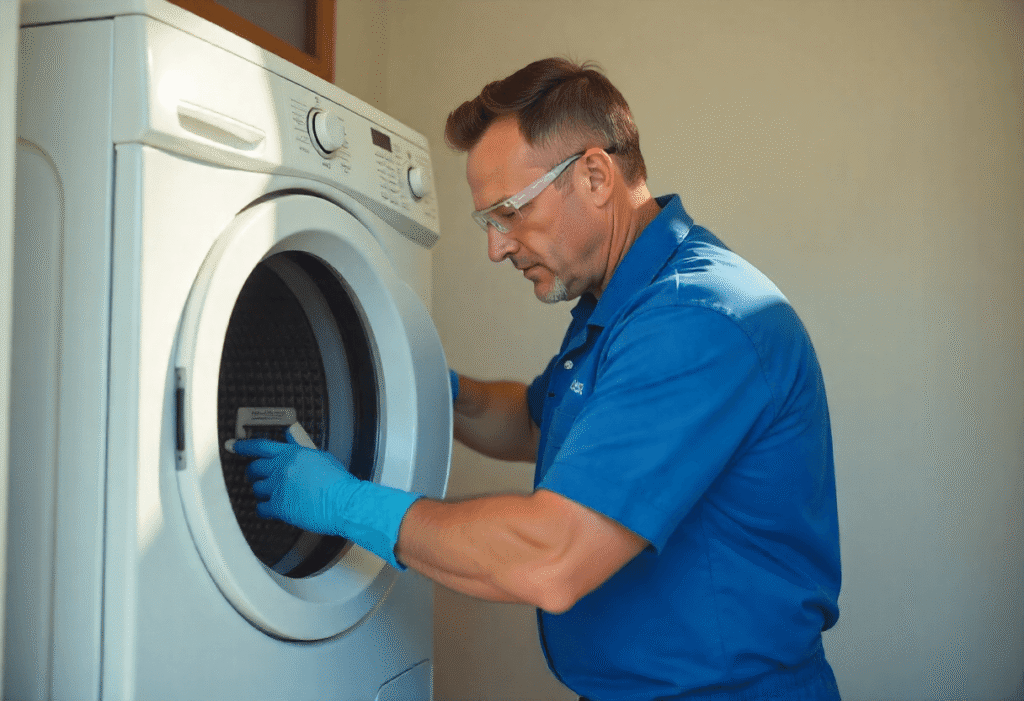
Even if you’re not tracking the exact timeline, your dryer will tell you when it’s time for a vent cleaning. You just have to know what to look for.
Talking about New Jersey homes where seasonal changes and older duct systems are common, these signs can sneak up fast.
If you notice any of the signs below, it’s probably time to call in a professional.
1. Dryer is hot to touch
If your dryer feels unusually hot during or after a cycle, especially on the top or sides, it’s a sign that heat isn’t venting properly. This not only stresses your dryer but creates a serious fire hazard.
2. Clothes take longer to dry
One of the first things people notice is drying time going from 40 minutes to over an hour. That’s not your dryer getting old, it’s your vent choking on lint.
It is simple: The less airflow, the harder it is for moisture to escape.
3. Musty or burning smells
If your laundry smells damp or moldy, or worse, you smell something burning, don’t wait. Musty smells can mean lint is getting damp and stagnant, while burning smells mean lint is overheating inside the duct.
4. Excess lint around the lint trap or dryer door
Are you seeing lint outside the lint trap or collecting around the dryer door?
This means lint is escaping into places it shouldn’t be, including the vent line. It can quickly turn into a major blockage.
5. Dryer shuts off mid-cycle
Many modern dryers have overheat protection and will shut down if temperatures get too high. So, if your dryer machine is stopping randomly, it might be protecting itself from a potential fire caused by poor ventilation.
6. Little or no airflow from dryer vent hood
Go outside while the dryer is running and check the vent flap.
Is it barely opening or not moving at all?
This usually means airflow is restricted, either from lint buildup or a full blockage, and it needs immediate cleaning.
7. More lint than usual in the trap
If your lint screen is filling up faster than normal, that’s a warning sign.
Your vent might already be partially blocked, causing lint to back up. Think of it as your system saying it needs attention.
8. Visible debris around the vent opening
Look outside where your dryer vents. If you see lint, dust, or even bird nesting material collecting around the vent exit, it’s a sure sign the system is clogged or becoming restricted.
In short, here are the signs that your dryer vent needs cleaning
| Sign | What It Means | Why It Matters |
| 1. Dryer is hot to touch | Heat isn’t venting properly | Overheating can stress the dryer and increase fire risk |
| 2. Clothes take longer to dry | Blocked vent restricts airflow | Dryer works harder and uses more energy |
| 3. Musty or burning smells | Moist lint or overheating inside vent | Indicates possible mold growth or fire hazard |
| 4. Excess lint around lint trap or door | Lint escaping normal path | A major sign of internal buildup or partial blockage |
| 5. Dryer shuts off mid-cycle | Overheat safety feature kicking in | Your dryer is preventing potential fire |
| 6. Little/no airflow from outside vent hood | Blocked airflow due to lint or debris | Immediate attention needed to restore safe ventilation |
| 7. Lint trap fills faster than usual | Lint backing up due to vent clog | Early warning that your vent needs cleaning |
| 8. Debris around exterior vent opening | External signs of blockage | Can include lint, dust, or bird nests are all fire risks |
Schedule Your Free Estimate Today
Contact us to improve your indoor air
quality with our expert cleaning services in NJ.
Conclusion
By now, you know how often should you clean your dryer vent in New Jersey, along with the factors that affect your cleanup schedule.
You see, regular dryer vent cleaning is essential to keep your home safe, your dryer running efficiently, and your energy bills in check.
So, whether you’re a low-usage single-family home or live in a busy household with pets, stick to the right cleaning schedule and you can prevent dangerous lint buildup.
Got more questions or need professional dryer vent cleaning in NJ?
You can get in touch with us!
At Clean Air Technologies, we are seasoned dryer vent cleaning experts with three decades of expertise. And we’ve got all your dryer cleaning and maintenance needs covered on a budget.
You might also want to read: How To Get Rid Of Mold In Air Ducts?
FAQs about how often to get dryer vent cleaned
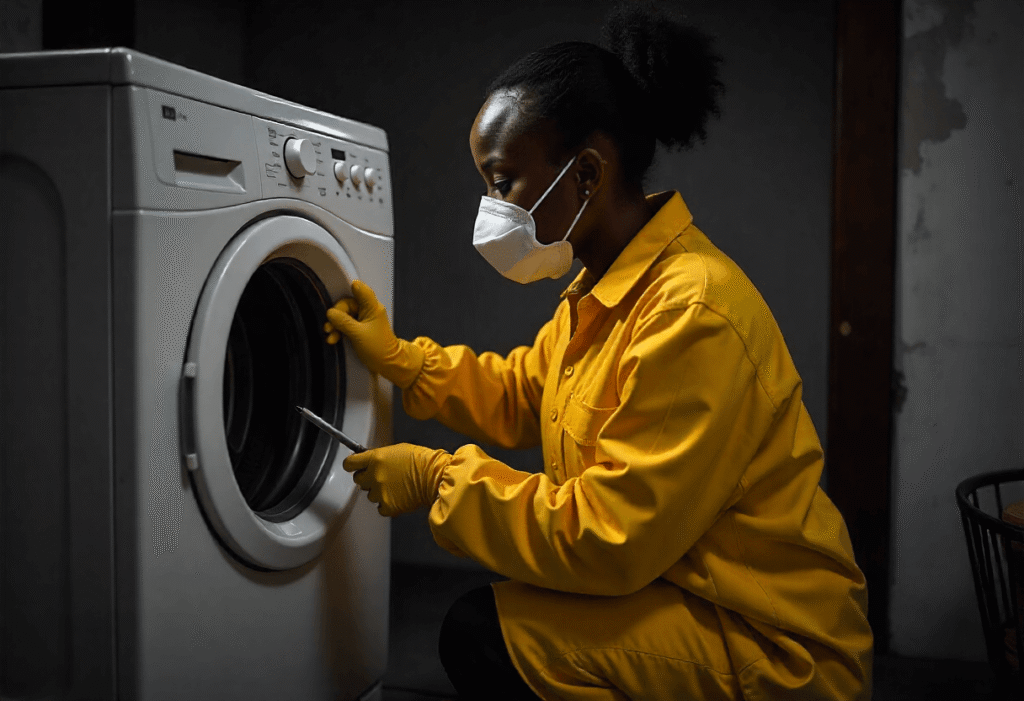
How often should I clean my dryer vent in New Jersey?
Most NJ homes should have their dryer vents cleaned every 6 to 12 months, but the exact timing depends on your household size, usage, presence of pets, and duct layout.
What are the risks of not cleaning my dryer vent regularly?
Neglected dryer vents can cause lint buildup, which is a leading cause of house fires, reduce drying efficiency, and increase energy bills.
Can I clean my dryer vent myself?
Yes, for short and accessible vents, DIY cleaning is possible using brushes and vacuums. But for long, complex, or damaged ducts, hiring a professional is safer and more effective.
Does New Jersey’s climate affect dryer vent cleaning frequency?
Yes. NJ’s humid summers and cold winters can cause lint and moisture buildup faster, increasing the need for regular vent cleaning.
How do I know if my dryer vent needs cleaning?
Signs include longer drying times, overheating dryer, burning smells, or visible lint around the dryer or vent exterior.

